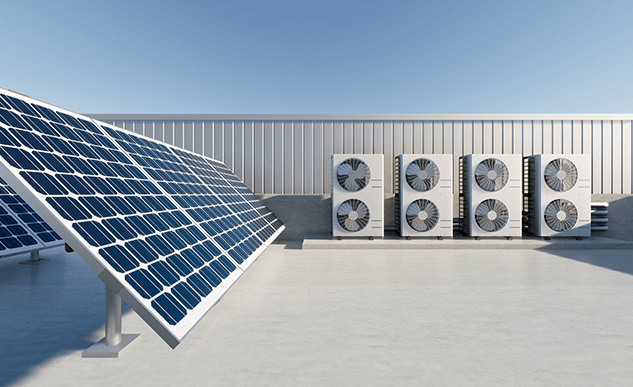Air conditioning has gone from a luxury to a necessity in homes and buildings worldwide. From its early beginnings to today’s smart, energy-efficient systems, the history of air conditioning reveals how this technology has shaped the way we live, work, and build. Whether you’re managing a large facility or upgrading your home system, understanding the roots of cooling technology helps inform smarter decisions about comfort, efficiency, and long-term value.
The Origins of Modern Cooling
The desire to control indoor temperature dates back centuries. Ancient Egyptians used reeds soaked in water to cool the air, and Romans circulated aqueduct water through walls to temper their homes. But it wasn’t until the early 20th century that mechanical air conditioning, as we know it, began to take form.
In 1902, Willis Carrier developed the first modern air conditioner—not for comfort, but to solve a printing problem. High humidity at a New York publishing company was causing ink to misalign. Carrier’s system controlled both temperature and humidity, laying the groundwork for what would become an essential technology in countless industries.
From Industrial Use to Residential Adoption
Throughout the early 20th century, air conditioning remained primarily industrial. Factories, theaters, and department stores were early adopters. The technology was bulky and expensive, so home use was rare.
That began to change in the 1930s and 1940s with the introduction of smaller, window-mounted units. After World War II, economic growth and rising middle-class income made home air conditioning more accessible. By the 1950s and ’60s, millions of American homes were installing these systems.
In the same period, office buildings began to rely heavily on centralized air conditioning systems. This shifted architecture itself—closed windows, glass facades, and open-plan offices became the norm, all designed with HVAC in mind.
Innovation and Efficiency Take the Lead
Over the decades, air conditioning evolved rapidly. Key innovations included:
Refrigerants: Early systems used substances like ammonia and propane, which were toxic or flammable. The introduction of less hazardous refrigerants such as Freon increased the feasibility of residential cooling systems.
Energy Efficiency: In response to rising energy costs and environmental concerns, the 1970s and 1980s saw the introduction of standards like SEER (Seasonal Energy Efficiency Ratio), prompting manufacturers to create more efficient systems.
Zoning and Smart Controls: Modern systems allow users to set different temperatures in different areas of a building. Smart thermostats and app-based control offer even greater precision and convenience.
Environmentally Friendly Refrigerants: In recent years, the phase-out of ozone-depleting substances like R-22 has led to the adoption of R-410A and other eco-conscious alternatives.
Air Conditioning in the Modern Home and Building
Today, air conditioning isn’t just about cooling—it’s part of an integrated indoor climate control system. In homes, ductless mini-splits, heat pumps, and hybrid systems offer flexibility for different spaces and needs. In commercial buildings, VRF (Variable Refrigerant Flow) systems allow for scalable, zone-specific cooling while reducing energy usage.
When selecting an air conditioning system today, it’s important to consider:
Size and Load: An oversized or undersized system can waste energy and reduce comfort. Proper load calculation is essential.
Indoor Air Quality: Many modern systems include filters and ventilation options to improve air quality, especially important in tightly sealed buildings.
Maintenance and Longevity: Regular servicing ensures optimal performance and extends system life.
Integration with Smart Home Systems: Connectivity can enhance control and reduce energy use through intelligent automation.
Why the History of Air Conditioning Matters Today
Service ac jakarta selatan: Understanding how air conditioning developed shows us how far the technology has come—and where it’s headed. Innovations continue to push for better performance, lower energy consumption, and more sustainable operation.
For homeowners and building professionals, this perspective helps frame the right questions when evaluating systems: Are we optimizing for efficiency? Are we choosing environmentally responsible options? Are we designing spaces that support—not work against—our climate control goals?
The evolution of air conditioning has been nothing short of transformative. From Carrier’s early invention to today’s high-performance, low-impact systems, the technology continues to shape modern living. At a time when comfort, cost, and climate impact are all in focus, smart choices in air conditioning matter more than ever.








